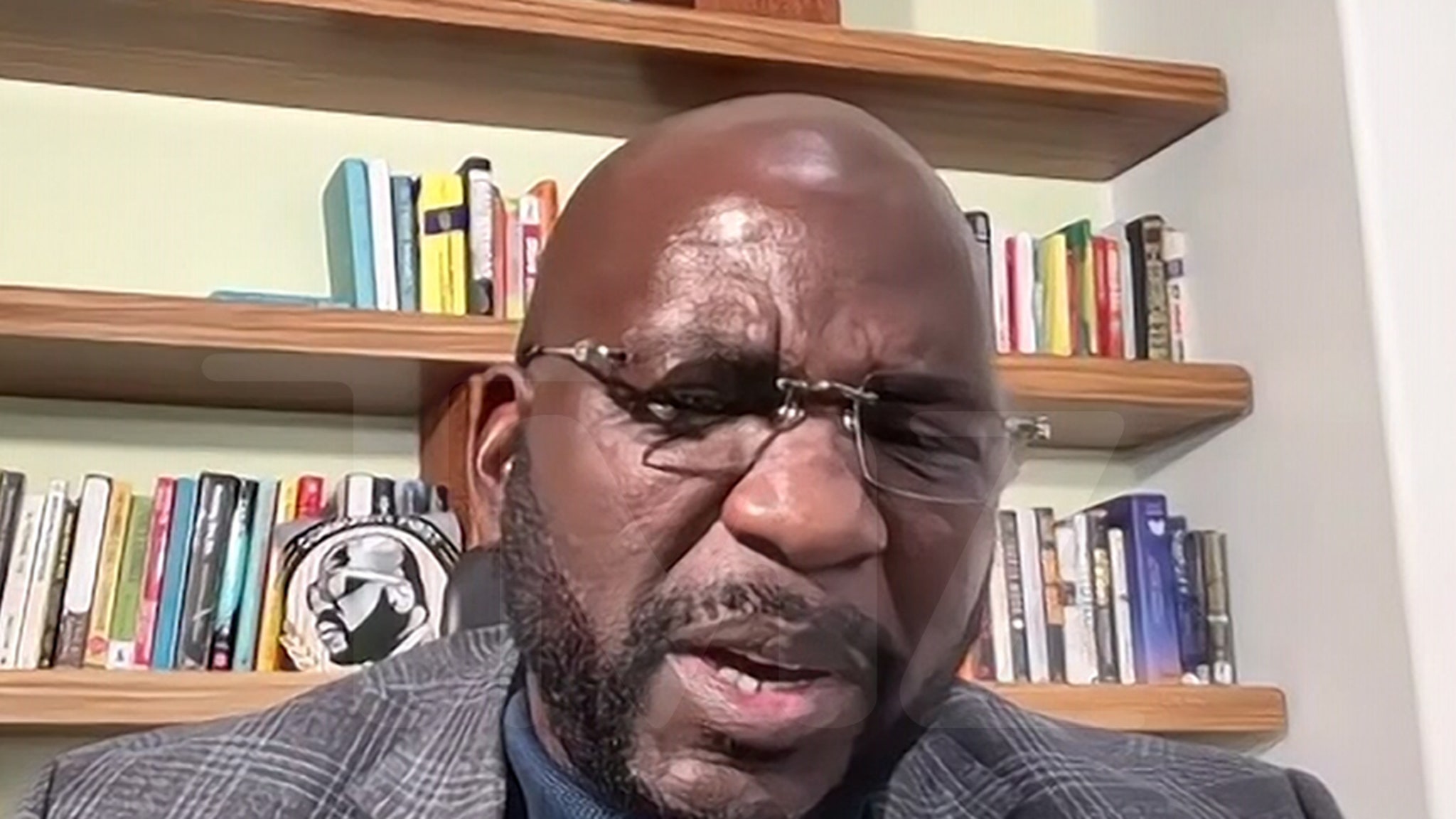The Supreme Court seemed ready on Tuesday to rule that the government may disarm people under domestic violence orders, limiting the sweep of last year’s blockbuster gun rights decision.
Several conservative justices, during a lively if largely one-sided argument, seemed to be searching for a narrow rationale that would not require them to retreat substantially from a new Second Amendment test the court announced last year in vastly expanding people’s right to arm themselves in public. Under the new standard, the justices said lower courts must look to history to assess the constitutionality of gun control measures.
But conservative justices seemed prepared on Tuesday to accept that a judicial finding of dangerousness in the context of domestic violence proceedings was sufficient to support a federal law making it a crime for people subject to such orders to possess guns — even if there was no measure from the founding era precisely like the one at issue in the case.
“Someone who poses a risk of domestic violence is dangerous,” Justice Amy Coney Barrett said, adding that other limits on gun rights posed harder questions.
The liberal justices, by contrast, appeared to want to use the case to revisit the history-based test. “What’s the point of going to the founding era?” Justice Ketanji Brown Jackson asked.
Solicitor General Elizabeth B. Prelogar, defending the law, said there was ample historical precedent for disarming people who were not, in the language of earlier Second Amendment decisions, law-abiding and responsible. Only Justices Clarence Thomas and Samuel A. Alito Jr. appeared consistently skeptical of Ms. Prelogar’s defense of the law, stressing that the protection order at issue was the product of an abbreviated civil proceeding.
Justice Neil M. Gorsuch, in contrast, asked a series of questions sketching out a minimalist ruling upholding the law, suggesting that the case before the court was an easy one.
“We actually have a finding of a credible threat,” he said. “The dangerousness argument seems most apparent there.”
The two other members of the court appointed by President Donald J. Trump — Justices Barrett and Brett M. Kavanaugh — made similar comments. Justice Kavanaugh, for instance, noted government statistics showing that more than 75,000 attempts to buy firearms by people subject to domestic violence restraining orders were rejected under the federal background check program.
There was general agreement that the combination of domestic strife and firearms can be lethal. The Supreme Court itself recognized this in a 2014 majority opinion. “All too often, the only difference between a battered woman and a dead woman is the presence of a gun,” Justice Sonia Sotomayor wrote for the court, quoting a lawmaker.
But the ramifications of the decision in the new case could extend far beyond domestic abuse. It may yield a major statement on the meaning of the court’s ruling last year that said that Americans had a broad right to arm themselves in public.
The argument came as the nation grapples with a seemingly unending series of mass shootings, including a recent one in Maine that left 18 people dead.
In last year’s decision, New York State Rifle & Pistol Association v. Bruen, the court struck down by a 6-to-3 vote a New York law that put strict limits on carrying guns outside the home. It also announced a new legal standard, one whose reliance on historical practices has sown confusion as courts have struggled to apply it, with some judges sweeping aside gun control laws that have been on the books for decades.
The majority opinion in Bruen, written by Justice Thomas, said courts must now judge restrictions on gun rights by turning to early American history as a guide. “The government must demonstrate,” he wrote, “that the regulation is consistent with this nation’s historical tradition of firearm regulation.”
The new case, United States v. Rahimi, No. 22-915, gives the court a chance to explore the scope of that new test.
The case started in 2019, when Mr. Rahimi assaulted his girlfriend and threatened to shoot her if she told anyone, leading her to obtain a restraining order. The order suspended Mr. Rahimi’s handgun license and prohibited him from possessing firearms.
Mr. Rahimi defied the order in flagrant fashion, according to court records.
He threatened a different woman with a gun, leading to charges of assault with a deadly weapon. Then, in the space of two months, he opened fire in public five times.
The appeals court, the U.S. Court of Appeals for the Fifth Circuit, rejected a variety of old laws identified by the government as possible historical analogues, saying they did not sufficiently resemble the one concerning domestic violence orders.
Justice Elena Kagan asked Ms. Prelogar for “any useful guidance we can give to lower courts about the methodology that Bruen requires be used and how that applies to cases even outside of this one.”
Ms. Prelogar made three points. Courts should look to historical sources other than enacted laws to unearth historical understandings, she said. When considering old laws, she added, courts should look for enduring principles at a high level of generality and not fixate on minute differences between old laws and new ones.
Finally, she said, the absence of old laws should not be conclusive. “So, for example, here we don’t have a regulation disarming domestic abusers,” she said. “But there is nothing on the other side of the interpretive question in this case, to suggest that anyone thought you couldn’t disarm domestic abusers or couldn’t disarm dangerous people.”
Justice Jackson indicated that lawmakers considering enacting new gun laws should not have to perform historical research.
“Let’s say I’m a legislator today in Maine, for example, and I’m very concerned about what has happened in that community and my people, the constituents, are asking me to do something,” she told Ms. Prelogar. “Do you read Bruen as, step one, being go to the archives and try to determine whether or not there’s some historical analog for the kinds of legislation that I’m considering?”
Ms. Prelogar responded that history counts but only to supply a general principle.
The case concerns Zackey Rahimi, a drug dealer in Texas with a history of armed violence. He is “hardly a model citizen,” a federal appeals court judge wrote in March. But the court vacated Mr. Rahimi’s conviction under a federal law that makes it a crime for people subject to domestic violence orders to have guns, ruling that the law violated the Second Amendment.
Chief Justice John G. Roberts Jr. said there was little question that Mr. Rahimi, who has been accused of a string of shootings, posed a threat to public safety.
“You don’t have any doubt that your client is a dangerous person, do you?” the chief justice asked Mr. Rahimi’s lawyer, J. Matthew Wright.
Mr. Wright said he would “want to know what ‘dangerous person’ means.”
Chief Justice Roberts supplied a definition. “Someone who is shooting at people,” he said. “That’s a good start.”
Mr. Wright retreated. “That’s fair,” he said.
In general, Mr. Wright’s argument was unfocused, frustrating the justices.
“I’m so confused,” Justice Amy Coney Barrett said.
Chief Justice Roberts, after hearing a concession, said: “I understand your answer to say that there will be circumstances where someone could be shown to be sufficiently dangerous that the firearm can be taken from him. And why isn’t that the end of the case?”
Justice Kagan told Mr. Wright that “I feel like you’re running away from your argument.”
“You know,” she said, “because the implications of your argument are just so untenable, that you have to say, no, that’s not really my argument.”







